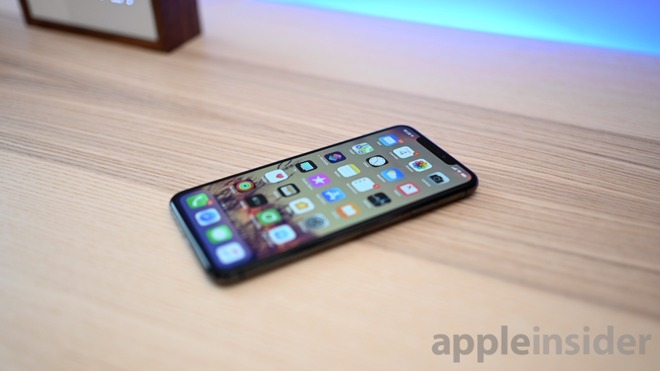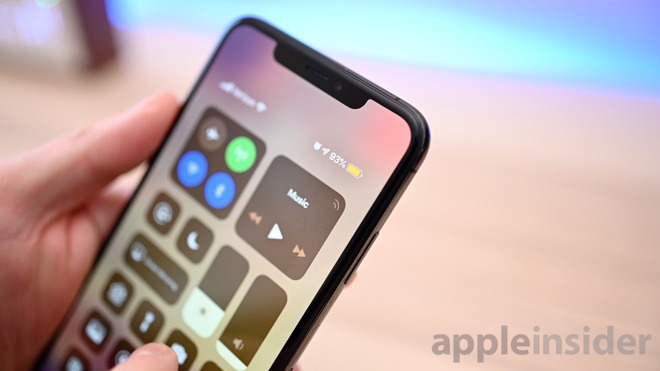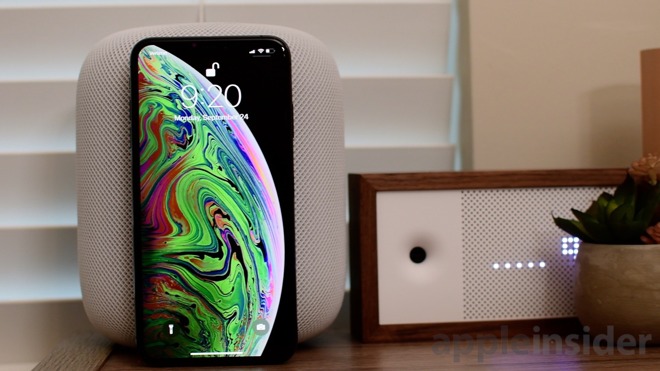Editorial: Apple's iPhone strategy is bad for investors, good for consumers
There has been much drama over Apple's stock prices lately, with the latest being the swing because of slowing iPhone sales in Greater China. While a lot of what Apple has done leading to this point isn't great for investors, it is pretty good for consumers.

iPhone XS Max
One of the largest factors Apple has always had going for it is a commitment to quality. Sure, there are occasional missteps where something runs afoul, but by and large, the quality is unmatched. Having a quality product is good for investors by driving sales with a product people love and can trust.
Moreover, it also gives these devices long lifespans. Apple could make great products using cheaper materials, but they would fail much sooner and not be nearly as recyclable or good for the environment. These long lifespans are in direct opposition to what investors ultimately want right now -- a short upgrade cycle for iPhone purchases.
When a device lasts longer than the nearly three years most consumers use a device these days, and instead lasts five or more through aftermarket sales, consumers win. They get a device that lasts and continue to provide value over a longer period of time. The secondary buyer gets a more affordable device than Apple's prices for a new iPhone, plus the original owner gets a substantial pile of cash for the old device.
The four-year old iPhone 6 Plus routinely sells on the secondary market for around $250, a great subsidy towards a new phone.

iPhone battery
Once a phone ages a bit, the battery -- which has always been a consumable -- often needs to be replaced. Apple offered inexpensive and quality $29 battery replacements for all through the end of 2018, another huge benefit for consumers potentially at the expense of investors. The program is over, but the steep price cut helped publicize that Apple was swapping batteries at all.
So, while the cost may have risen for the battery replacement at the turn of the new year, more people are aware that it can be done by Apple itself, and will likely utilize it when the time comes to extend the life of a device.
Beyond the physical quality of a phone, Apple has been investing heavily in its software platform. In 2018, Apple released iOS 12 which focused heavily on usability and stability. New features existed, over 150 by our count, but none of them were the huge overhauls many expected. This helps the latest and greatest software -- minus a few features -- run on years-old devices. This helps extend the lifespan of those devices further than just the hardware.

Apple iPhone
Recently, we've reached near-saturation of the smartphone market. There are no new geographic markets to expand into that don't have some form of Apple presence, be it authorized dealers or Apple Retail itself. To combat this, for over two years now, Cook and company have been highlighting services, where the number of new phones doesn't matter as much, but the install base does.
Analysts are on the cusp of figuring this out, with some ahead of the pack. Investors and Wall Street as a whole still haven't.
Given this not-new premise, the more devices that are out there that are in the hands of people willing to spend on services and apps, the more Apple benefits. Processors and cameras that are now a few years old are still very capable, so the incremental changes aren't necessarily as lust-worthy as they once were.
A user who pays $250 for an iPhone 6 Plus wasn't ever likely to grab one of the latest iPhones. But since the devices work so long, they can grab this four-year-old device instead and still get into the Apple ecosystem where they can pay for apps and other Apple services.
But, to rely on the second-hand and refurbished market like this, the devices have to last. And, the public has to know that they will.
There is a vast difference between designing products that are meant to last briefly and burn out, versus creating products that last a few years that last well past the average lifespan for a consumer electronics device. Apple has chosen the latter through both Steve Jobs' second-coming and Tim Cook's reign, and it remains great for consumers.
In the short term, this approach isn't so good for investors focused on unit sales. In the long term, however, it will pay off.

iPhone XS Max
One of the largest factors Apple has always had going for it is a commitment to quality. Sure, there are occasional missteps where something runs afoul, but by and large, the quality is unmatched. Having a quality product is good for investors by driving sales with a product people love and can trust.
Moreover, it also gives these devices long lifespans. Apple could make great products using cheaper materials, but they would fail much sooner and not be nearly as recyclable or good for the environment. These long lifespans are in direct opposition to what investors ultimately want right now -- a short upgrade cycle for iPhone purchases.
When a device lasts longer than the nearly three years most consumers use a device these days, and instead lasts five or more through aftermarket sales, consumers win. They get a device that lasts and continue to provide value over a longer period of time. The secondary buyer gets a more affordable device than Apple's prices for a new iPhone, plus the original owner gets a substantial pile of cash for the old device.
The four-year old iPhone 6 Plus routinely sells on the secondary market for around $250, a great subsidy towards a new phone.

iPhone battery
Once a phone ages a bit, the battery -- which has always been a consumable -- often needs to be replaced. Apple offered inexpensive and quality $29 battery replacements for all through the end of 2018, another huge benefit for consumers potentially at the expense of investors. The program is over, but the steep price cut helped publicize that Apple was swapping batteries at all.
So, while the cost may have risen for the battery replacement at the turn of the new year, more people are aware that it can be done by Apple itself, and will likely utilize it when the time comes to extend the life of a device.
Beyond the physical quality of a phone, Apple has been investing heavily in its software platform. In 2018, Apple released iOS 12 which focused heavily on usability and stability. New features existed, over 150 by our count, but none of them were the huge overhauls many expected. This helps the latest and greatest software -- minus a few features -- run on years-old devices. This helps extend the lifespan of those devices further than just the hardware.

Apple iPhone
Recently, we've reached near-saturation of the smartphone market. There are no new geographic markets to expand into that don't have some form of Apple presence, be it authorized dealers or Apple Retail itself. To combat this, for over two years now, Cook and company have been highlighting services, where the number of new phones doesn't matter as much, but the install base does.
Analysts are on the cusp of figuring this out, with some ahead of the pack. Investors and Wall Street as a whole still haven't.
Given this not-new premise, the more devices that are out there that are in the hands of people willing to spend on services and apps, the more Apple benefits. Processors and cameras that are now a few years old are still very capable, so the incremental changes aren't necessarily as lust-worthy as they once were.
A user who pays $250 for an iPhone 6 Plus wasn't ever likely to grab one of the latest iPhones. But since the devices work so long, they can grab this four-year-old device instead and still get into the Apple ecosystem where they can pay for apps and other Apple services.
But, to rely on the second-hand and refurbished market like this, the devices have to last. And, the public has to know that they will.
There is a vast difference between designing products that are meant to last briefly and burn out, versus creating products that last a few years that last well past the average lifespan for a consumer electronics device. Apple has chosen the latter through both Steve Jobs' second-coming and Tim Cook's reign, and it remains great for consumers.
In the short term, this approach isn't so good for investors focused on unit sales. In the long term, however, it will pay off.


Comments
Like much of the market, the Trump effect was speculation on the exponential growth of stock prices. Apple stock prices certainly grew exponentially along with the rest of the market (exceptions like GE, Toy's R Us, Sears, etc -- being run into the ground by poor management or rape by their CEOs and vulture capitalists). Key point, exponential growth is NEVER sustainable -- it has to collapse.
Apple stock price started 2017 at $121.35, and rose exponentially to $227.63 on Aug 1 2018. There was never a fundamental economic reason for a near 200% rise in Apple stock in two years, even given Apple's buyback of stock over the last two years. Apple stock price today ($148) is about 20 points below its January 2018 price, but from a linear growth perspective, even this is quite acceptable from an investment standpoint -- a 22% increase over 2 years -- compare that to your bank savings account.
I have an idea in mind how to jumpstart the upgrade cycle for iPhones. Have someone from Apple contact me. It's legit.
Point the second: You're on your own. I'm sure they'll be thrilled to hear your opinion.
For my case ,I always purchase refurbished iPhones, and use them 2-4 years. I have now AirPods,Apple Watch Series 2 along with my iPhone SE.Apple Music subscription is being used too. So like DED said apple is investing on individual users.No one is being forced to use them.
New phone. Modern technology. Amazing build quality. Fast charging. Extra storage etc. It was Android but I liked the system much more than iOS.
Nowadays, you can pick up amazing new phones that leave four year old hardware in the dust for 250€ (or less!) and follow a far shorter upgrade path or hang on to it for longer if you wish.
You would have to be an iOS die hard to pick up a four year old iPhone as your main phone.
I think my situation is pretty indicative of many people who were in my situation and it is one of the reasons iPhone sales flattened.
New, far cheaper phones from competitors are more than good enough on every level.
The big difference between today and four years ago is that competitors are offering amazing phones at every price band right up into premium and far beyond.
Plenty of options at plenty of prices.
Apple has very limited options and an 's' cycle which is now taking the edge off of its ability to react to market trends.